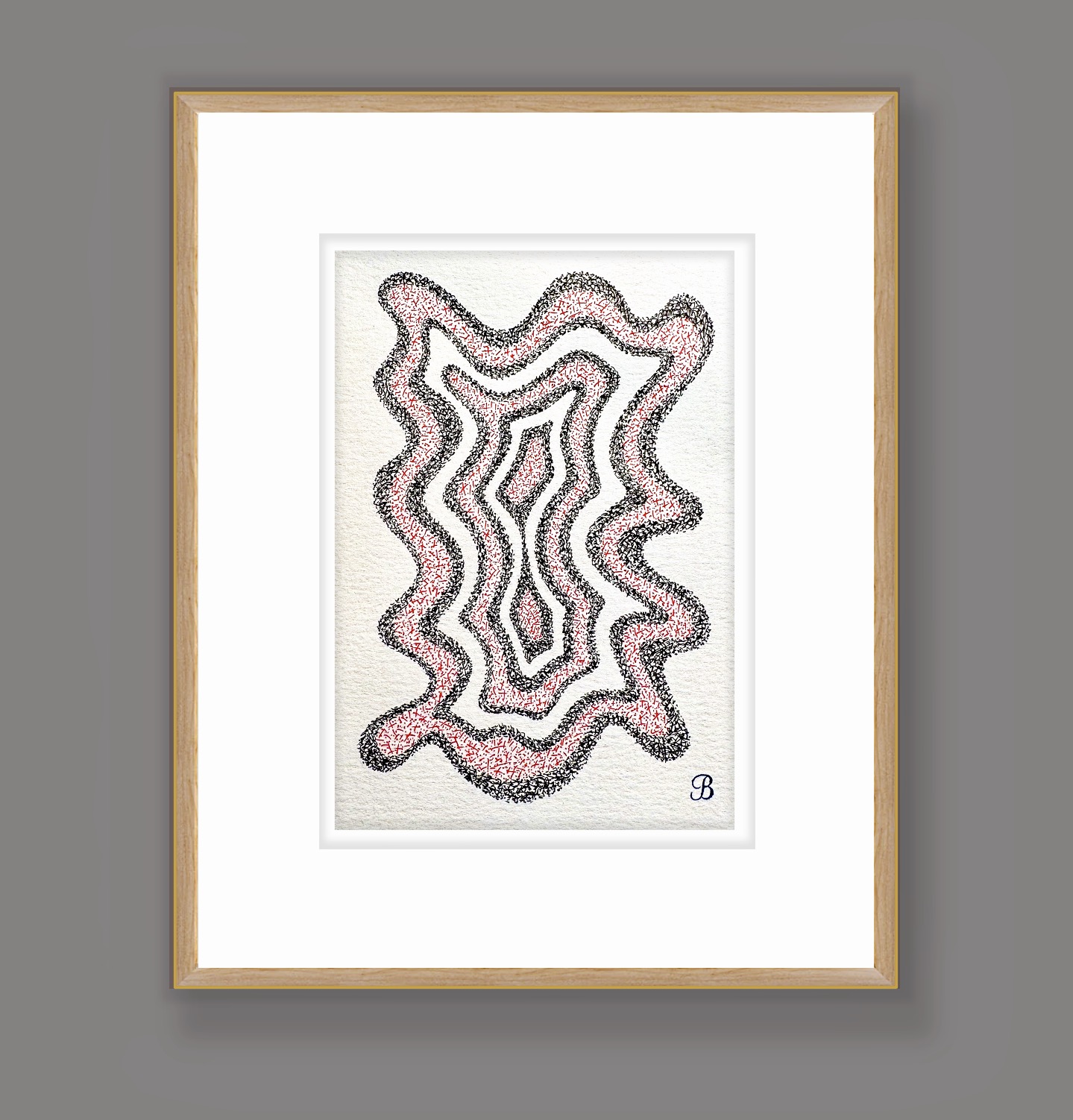

Title: Original abstract graphic design created using stippling and pointillism on paper.
Shipping: $29.00
Artist: N/A
Period: Contemporary
History: Art
Origin: North America > United States
Condition: Very Good
Item Date: N/A
Item ID: 1687
I have approximately 50 exceptional contemporary small works on rag paper available. Each abstract graphic design piece is an original drawing, signed, and accompanied by provenance and a personal story. Created entirely freehand with remarkable patience and precision, every mark, scratch, and point reflects a highly refined technique. These abstract pointillism pen-and-ink paintings embody both simplicity and beauty, with each composition requiring around eight hours of focused craftsmanship. Please schedule an appointment if you’re interested in viewing them. $125 per piece — several sizes available (first-come, first-served). Standard size: 5½ × 7½ inches. Abstraction through pointillism and stippling is a sensitive and time-consuming art form that demands both technical skill and patient observation. Each dot or mark is deliberately placed, contributing to a larger composition that conveys depth, texture, and emotion. This meticulous process has a rich history, tracing back to the late 19th century with artists like Georges Seurat and Paul Signac, who pioneered pointillism as a method of capturing light and color scientifically. Over time, abstraction evolved, allowing artists to use these tiny, precise marks not just for realism but to evoke personal expression and conceptual ideas. In contemporary practice, pen-and-ink stippling and pointillism honor this legacy, combining the discipline of craft with the freedom of abstract storytelling, creating works that are both visually compelling and deeply reflective of the artist’s intent.
Stippling has a longer history, appearing in engraving, printmaking, and drawing as early as the Renaissance. Artists used this technique to achieve gradients, shadows, and textures by varying the density and distribution of dots. While pointillism is largely associated with color painting, stippling traditionally appears in monochrome media like pen-and-ink, etching, or graphite. Over time, both techniques influenced modern and contemporary artists, who adapted the dot-based method to create abstract, detailed, and highly expressive works.
Wikipedia: Memento Mori
Memento mori is a Latin phrase meaning "Be mindful of death" and may be translated as "Remember that you are mortal," "Remember you will die," "Remember that you must die," or "Remember your death". It names a genre of artistic creations that vary widely from one another, but which all share the same purpose, which is to remind people of their own mortality.
In ancient Rome, the phrase is said to have been used on the occasions when a Roman general was parading through the streets of Rome during the victory celebration known as a triumph. Standing behind the victorious general was a slave, and he had the task of reminding the general that, though he was up on the peak today, tomorrow was another day. The servant did this by telling the general that he should remember that he was mortal: "Memento mori." It is also possible that the servant said, rather, "Respice post te! Hominem te esse memento!": "Look behind you! Remember that you are but a man!", as noted in Tertullian in his Apologeticus.[1] Another phrase used in such a setting is Sic transit gloria mundi.
The concept, in the art of classical antiquity, was more frequently embodied in the phrase carpe diem, or "seize the day," a phrase most well-known from Horace's ode to Leuconoe[2].